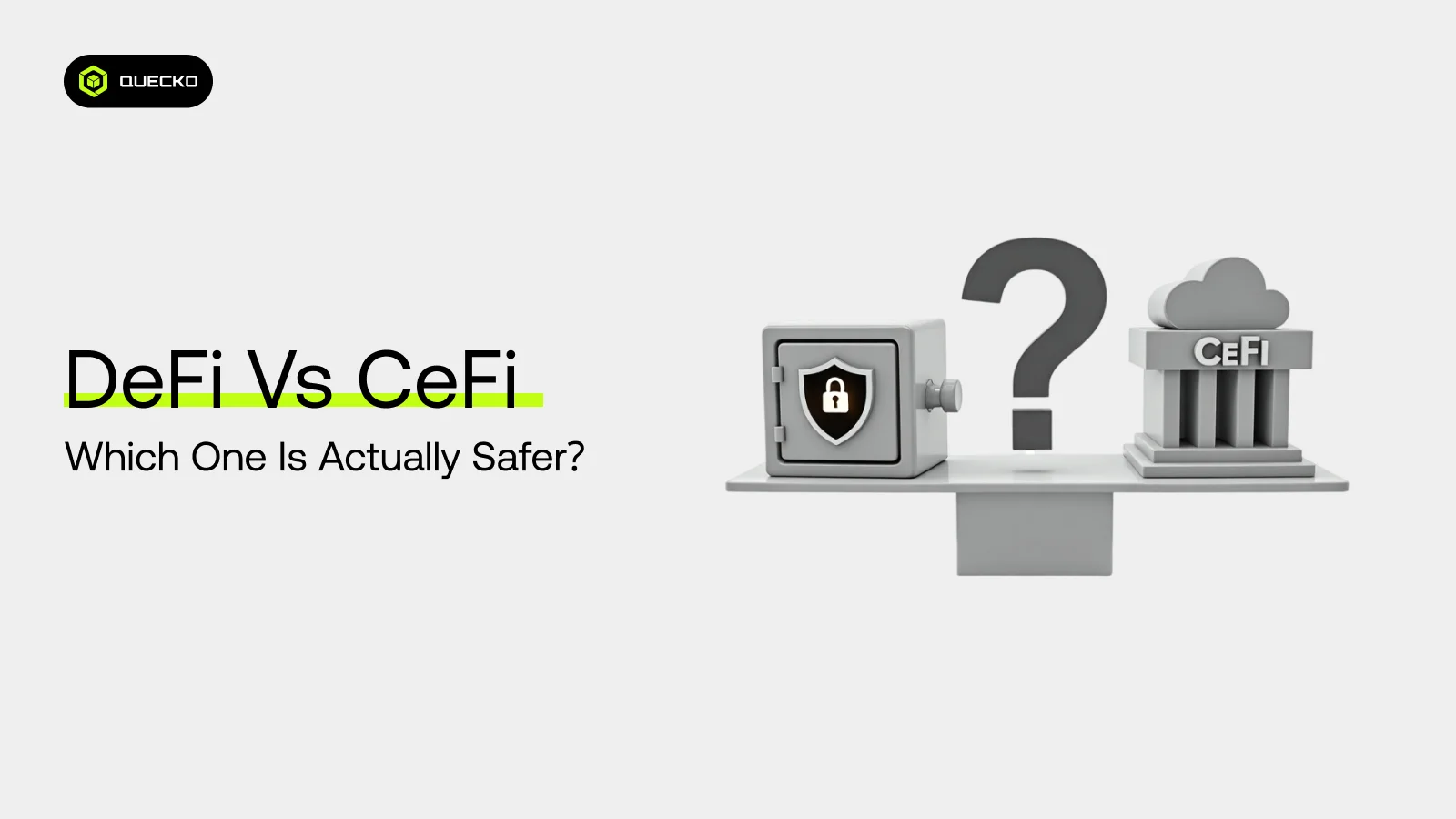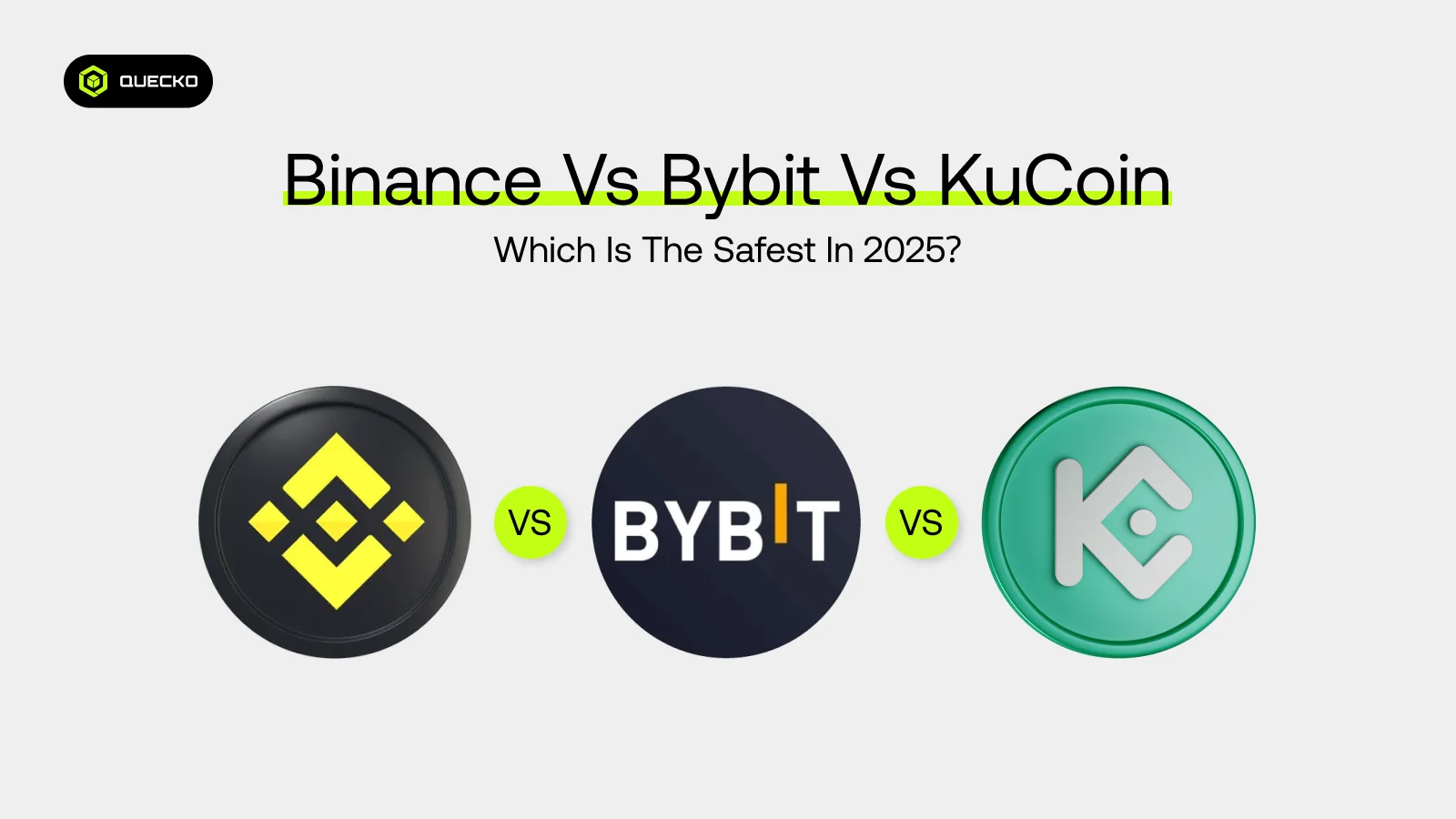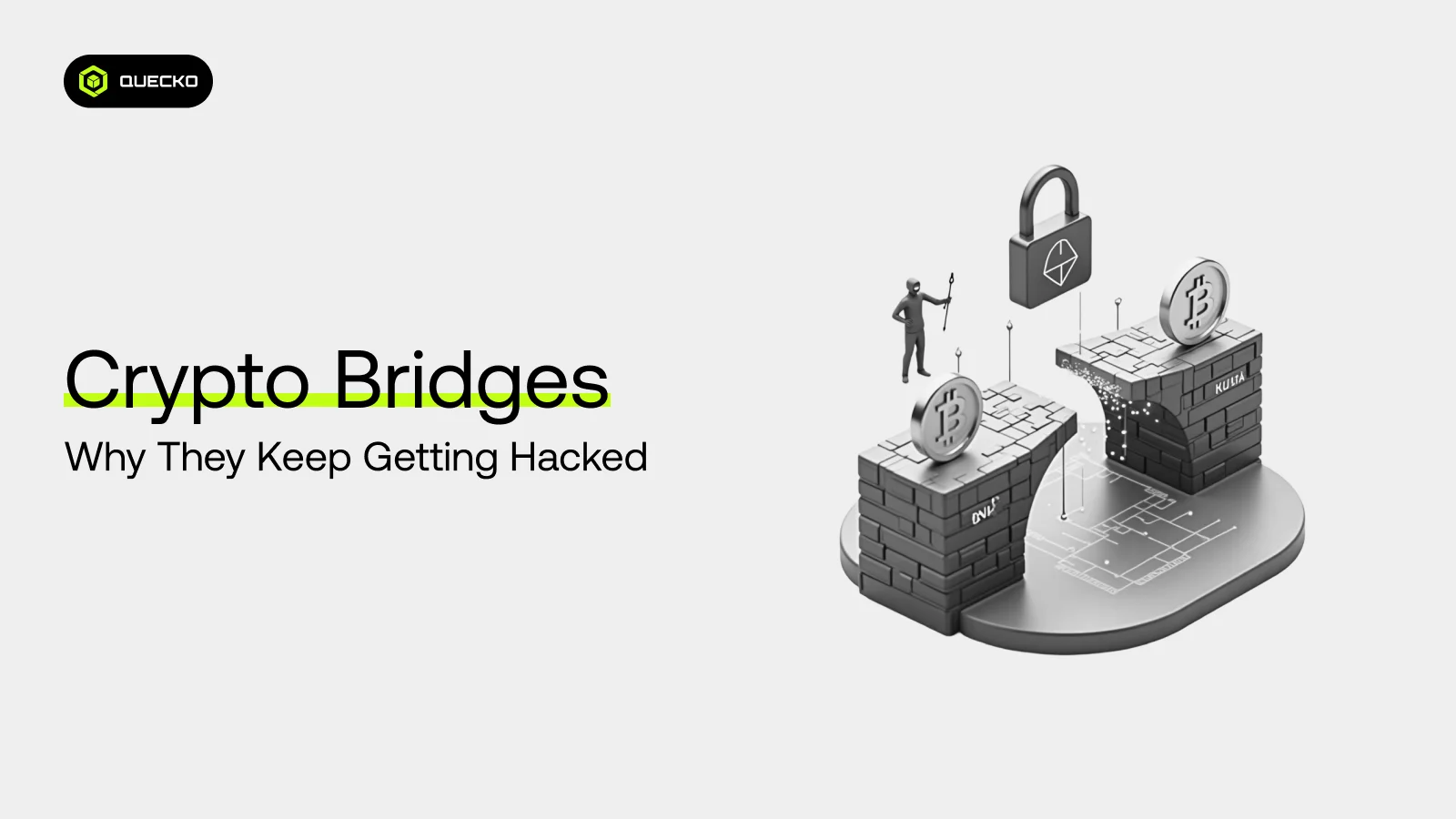Binance vs Bybit vs KuCoin – Which is the Safest in 2025?
Safest crypto exchange in 2025? We compare Binance, Bybit, and KuCoin to find out.
In 2025, navigating the world of cryptocurrency trading isn’t just about finding the best trading fee or the widest selection of trading pairs—it’s about choosing a crypto exchange that prioritizes your security, complies with evolving regulations, and upholds genuine transparency. As the crypto space matures, regulatory scrutiny and sophisticated security threats have become constant challenges for traders and exchanges alike. That’s why selecting a safe and reliable cryptocurrency exchange has become more critical than ever.
Among the most popular platforms today, Binance, Bybit, and KuCoin stand out as leaders in the global market. But how do these giants compare when it comes to protecting your assets? This in-depth comparison explores the key pillars that define trust in crypto: regulatory compliance, from licensing clarity to legal status around the world; security measures such as 2FA, cold wallet storage, and past hack history; user fund protection, including insurance coverage and proof-of-reserves practices; and the transparency and trustworthiness each exchange demonstrates through audits and company reputation.
Whether you’re just dipping your toes into spot trading or deeply immersed in high-frequency crypto trading, understanding how these platforms measure up will help you make the safest choice among today’s top cryptocurrency exchanges. Because in a space where volatility is the norm, your peace of mind should come from knowing your platform is built on trust.
1. Regulatory Compliance (2025 Update)
In 2025, as the regulatory landscape tightens across global markets, selecting a cryptocurrency exchange that aligns with both compliance and user expectations has never been more important. While platforms continue to evolve with advanced trading tools, low trading fees, and diverse trading pairs, it’s their regulatory posture that increasingly shapes trader confidence. Let’s dive into how Binance, Bybit, and KuCoin are navigating this complex terrain.
Binance: A Global Titan Under Regulatory Pressure
Binance, long considered a juggernaut in crypto exchanges, remains a dominant force thanks to its immense trading volume, wide access to spot trading, futures trading, and innovative features like trading bots and copy trading. It holds key licenses under the EU’s MiCA regulatory framework, Dubai’s VARA authority, and in Australia, making it a legitimate crypto exchange in several major regions.
However, the platform’s challenges are growing: Binance.US continues to face legal troubles with the SEC, battling lawsuits and grappling with liquidity concerns. Additionally, it remains banned in the UK for derivatives trading and is inaccessible in Canada due to restrictive cryptocurrency exchange policies. Ongoing scrutiny in emerging markets like Nigeria also signals a tough road ahead.
Despite strong security measures, including two factor authentication and cold storage, Binance’s regulatory setbacks may give traders pause—especially those looking for compliance-driven environments.
Bybit: Compliance-First and On the Rise
Bybit stands out as one of the fastest-rising stars in the regulated crypto trading world. It has secured full licensing under MiCA in the EU and obtained approvals in both Dubai and Kazakhstan, signaling a clear commitment to long-term regulatory alignment. After exiting markets like Canada and the UK in 2023, Bybit is planning strategic re-entry through compliant, fully licensed offerings.
This forward-thinking approach is complemented by strict KYC requirements, eliminating anonymous trading to enhance credibility and platform safety. Known for its sleek and user-friendly interface, Bybit offers a complete suite of services—from margin trading, spot trading, and futures trading, to beginner-friendly copy trading, all accessible via a highly rated mobile app. Coupled with responsive customer support, institutional-grade custody, and transparent security measures, Bybit earns its reputation as a regulation-friendly cryptocurrency exchange.
KuCoin: Progressing, But Playing Catch-Up
KuCoin, while historically popular for its wide availability of fiat currencies and attractive trading fee structure, has had a rockier compliance journey. It has made strides recently, registering in India and working toward EU compliance under MiCA. However, the shadows of past issues still linger—such as the $22 million fine from the U.S. CFTC in 2023 for unregistered operations.
Regulatory gaps continue to restrict KuCoin in multiple jurisdictions, making it less accessible than its peers. That said, KuCoin still appeals to users who seek a robust mix of spot trading, margin trading, and automated tools like trading bots, supported by an evolving feature set and improving security posture.
In this increasingly complex regulatory climate, Bybit clearly takes the lead as the most proactive and compliance-driven platform among top crypto exchanges. It balances strict adherence to licensing requirements with a seamless trading experience, fortified by advanced security measures and real-time transparency. For traders who value not just performance, but peace of mind, Bybit offers the clearest regulatory path forward.
2. Security & Hacking History
In the fiercely competitive world of crypto exchanges, security isn’t just a feature—it’s the foundation of trust. As more traders enter the space and trading volume continues to climb, breaches can have devastating consequences for both platforms and users, especially those managing large portfolios across futures trading, spot markets, and automated systems like trading bots. Here’s how the top three platforms—Binance, Bybit, and KuCoin—stack up in 2025 when it comes to safeguarding your assets.
Binance: Powerful, Popular, but Not Without Scars
Binance, the industry behemoth, has maintained its stronghold through a wide range of offerings and global reach. However, its security history is blemished. One of its most notable incidents was the 2022 cross-chain exploit that resulted in a $570 million loss. The platform responded swiftly, activating its SAFU (Secure Asset Fund for Users) to contain the damage and compensate users.
Despite these setbacks, Binance has heavily reinforced its defenses. It secures 95% of user funds in cold storage, utilizes two factor authentication, anti-phishing codes, and device whitelisting to bolster user protection. Its competitive maker fee/taker fee model attracts high-frequency traders, while customer support and a rich array of tools continue to expand its global user base. Still, the history of high-profile breaches lingers for security-conscious investors.
Bybit: A Fortress in the Face of Threats
Bybit stands out as the most secure among leading cryptocurrency exchanges in 2025, with zero major breaches reported to date. This spotless record is supported by institutional-grade, multi-signature wallets, enforced KYC policies, and real-time threat monitoring systems that actively scan for suspicious behavior.
What makes Bybit even more appealing is that it delivers top-tier security without compromising performance. Traders benefit from low trading fees, high-liquidity futures trading markets, and support for automated strategies via trading bots. Whether you’re a retail investor or an institution, Bybit provides a strong and transparent defense ecosystem that fits the demands of modern crypto trading.
KuCoin: Rebuilding After the Fall
KuCoin faced a major setback in 2020 when it suffered a $280 million hack due to poor key management. Since then, the platform has made significant efforts to restore its reputation, including launching an insurance fund and partnering with cybersecurity firm Fireblocks to strengthen its infrastructure.
Today, KuCoin prioritizes cold storage, security partnerships, and improved protocols. However, it still lacks frequent third-party audits—something that could help reassure users about its internal operations. KuCoin remains an appealing option for users interested in diverse digital assets, flexible maker fee/taker fee structures, and always-on customer support. Still, the shadow of its past breach may deter risk-averse traders.
In 2025, Bybit emerges as the most secure crypto exchange—not just for avoiding breaches but for actively constructing a security framework that anticipates and deflects evolving threats. Its commitment to high-level custody, strict compliance, and seamless performance makes it the top choice for traders focused on both safety and execution. Whether you’re aiming to reduce trading fees, build custom strategies, or simply trade with peace of mind, Bybit has the most complete package among today’s leading crypto platforms.
| Exchange | Past Hacks? | Security Features |
| Binance | Yes (2022, $570M hacked) | SAFU fund
, 2FA, cold storage |
| Bybit | No major breaches | Multi-sig wallets
, mandatory KYC |
| KuCoin | Yes (2020, $280M stolen) | Insurance fund
, improved security since |
Winner (2025): Bybit (no major breaches, strong KYC).
3. Fund Protection & Transparency
As cryptocurrency adoption surges in 2025, fund protection and transparency have become two of the most crucial benchmarks for evaluating a crypto exchange. Traders are no longer just focused on low trading fees, robust trading tools, or seamless mobile app experiences—they want assurance that their digital assets are secure and that the platform they trust is transparent about its holdings and risk management strategies. When examining three of the top crypto exchanges—Binance, Bybit, and KuCoin—their approaches to user fund protection and corporate transparency speak volumes about their long-term reliability.
Binance: Strong Security, Lingering Questions
Binance, still considered one of the largest global players by trading volume, continues to highlight its Secure Asset Fund for Users (SAFU), an emergency insurance fund designed to cover users’ assets in case of unexpected losses or hacks. This initiative, combined with comprehensive two factor authentication and layered security measures, offers a degree of reassurance.
Binance also publishes regular proof-of-reserves, aimed at demonstrating solvency and fund backing. However, despite these efforts, questions linger about the quality and frequency of their audits, casting a shadow over their full commitment to openness. While Binance shines in offering advanced derivatives trading, futures trading, and spot trading, some traders remain cautious due to a perceived lack of transparency.
Bybit: Setting a New Standard in Trust
Bybit has raised the bar in fund protection and clarity. Known for its professional-grade infrastructure, Bybit provides institutional-level custody solutions, ensuring that users’ assets are stored with high levels of protection. What sets Bybit apart is its real-time proof-of-reserves system—users can verify the platform’s solvency at any moment, fostering trust and reinforcing accountability.
Whether you’re engaged in copy trading, leveraging derivatives trading, or enjoying competitive trading fees, Bybit’s transparency-first model enhances its position as a well-rounded cryptocurrency exchange.
KuCoin: Making Progress, But Still Playing Catch-Up
KuCoin, long praised for its vast selection of spot trading pairs and accessibility to a wide variety of digital assets, has also made strides in bolstering its insurance mechanisms. Its enhanced fund protection structure includes a growing insurance reserve, but unlike its competitors, KuCoin still lacks regular third-party audits or consistent public disclosure of its holdings.
While the platform offers many of the same features—from margin trading and copy trading to an intuitive mobile app—its credibility on fund transparency hasn’t kept pace.
In the ever-evolving realm of cryptocurrency exchanges, trust is non-negotiable. And when trust is rooted in transparency and proactive fund protection, Bybit emerges as the clear leader in 2025. Its real-time disclosures, robust custody, and dedication to building user confidence make it an ideal choice for anyone seeking a secure and transparent trading environment.
Whether you’re a retail trader managing a modest portfolio or a professional navigating high-leverage futures trading, Bybit’s holistic approach ensures your assets are in trustworthy hands.
| Feature | Binance | Bybit | KuCoin |
| Proof-of-Reserves | ✅ (But audit concerns) | ✅ (Fully transparent) | ❌ (Rarely updated) |
| Insurance Fund | SAFU ($1B+) | ✅ (Institutional coverage) | ✅ (But smaller) |
| User Fund Storage | 95% Cold Wallet | 98% Cold Wallet | ~90% Cold Wallet |
| Third-Party Audits | Occasional | Frequent (Mazars) | Rare |
🔒 Winner (Fund Safety): Bybit (best transparency & reserves).
4. Additional Risks in 2025
In the dynamic and rapidly maturing crypto ecosystem of 2025, identifying potential risks associated with your crypto platform of choice is just as critical as assessing its features. Despite offering high-liquidity trading interfaces, compelling sign-up bonuses, and access to sophisticated tools like crypto trading bots and leverage tokens, the leading platforms—Binance, Bybit, and KuCoin—each come with their own set of vulnerabilities that traders should consider before committing significant assets.
Binance: Legal Pressure Overshadowing a Powerful Ecosystem
Binance, often praised for its sheer market value and enormous base of active users, continues to grapple with intensifying regulatory uncertainty, especially in the U.S. Legal scrutiny surrounding its operations poses potential barriers to cryptocurrency transactions, with implications for everything from payment methods to long-term account stability.
If more nations follow suit in banning Binance, the impact could strain relationships with liquidity providers, directly affecting market prices, faster transactions, and overall user experience. While Binance boasts competitive maker fee and taker fee models and a feature-rich NFT marketplace, these advantages may be offset if account access or fiat gateways are restricted due to ongoing litigation.
Bybit: Compliance-Driven Yet Less Flexible for Privacy-Centric Users
Bybit, on the other hand, has emerged as a compliance-first contender. Yet its rigorous KYC verification standards—while excellent for security—mean that anonymous trading is no longer possible, which may deter users who value privacy.
Additionally, the platform still offers limited support for certain payment methods, especially in less-developed financial regions. While the platform’s strong user interface, real-time monitoring, and NFT marketplace integration position it as a top-tier exchange, it’s less accommodating for users looking to operate without extensive KYC verification protocols.
Even so, Bybit’s streamlined experience, enriched educational resources, and integration of blockchain technology continue to attract a loyal and growing base of active users.
KuCoin: Slowly Rebuilding from a Shaky Past
KuCoin, once reeling from high-profile security incidents, has steadily rebuilt its infrastructure with improved hot wallet security, partnerships, and more transparent risk controls. However, reputational damage from the past still affects its ability to onboard new users with confidence.
Traders have also reported slower response times from customer support, particularly when resolving disputes or complex issues surrounding block trades, lending options, or withdrawal delays. That said, KuCoin remains attractive for users seeking variety—whether it’s diverse cryptocurrency transactions, access to niche tokens, or flexible maker fee/taker fee structures.
Its versatile trading interface, support for financial markets, and feature-packed tools continue to make it a competitive choice, especially among seasoned traders using crypto trading bots to maximize opportunities.
Across all platforms, the interplay between risk and reward is increasingly nuanced in 2025. Whether you’re optimizing strategies via futures trading, browsing an NFT marketplace, or monitoring market prices for the next blockchain technology breakout, understanding each exchange’s limitations is vital.
By being aware of these additional risks—ranging from regulatory friction and fiat limitations to legacy trust issues—you’ll be better equipped to navigate the evolving world of crypto with clarity and caution.
Final Verdict: Which is the Safest in 2025?
After digging deep into the current state of crypto exchanges in 2025, it’s clear to me that Bybit stands out as the safest and most well-rounded option. What impresses me most is how Bybit has managed to strike a rare balance—it’s compliant with major regulations, proactive in user fund transparency, and has maintained a flawless security track record to date. In a time when trust in centralized platforms can be shaken by a single breach or lawsuit, that kind of consistency matters.
Binance, despite being a global titan with vast trading volume and some of the lowest trading fees around, still struggles with lingering regulatory pressure and the reputational baggage of past hacks. I see it as a powerful platform, but one that operates under a persistent cloud of “what if.” KuCoin has made meaningful progress since its 2020 hack and deserves credit for that, but it’s still catching up in terms of audits and compliance.
So if you ask me where I’d be most comfortable storing my assets, trading regularly—whether it’s futures, spot, or just experimenting with trading bots—I’d go with Bybit. It’s not just about features or flashy UI; it’s about knowing the foundation beneath it all is solid and built to last in a space that changes fast.
Date
4 days agoShare on











